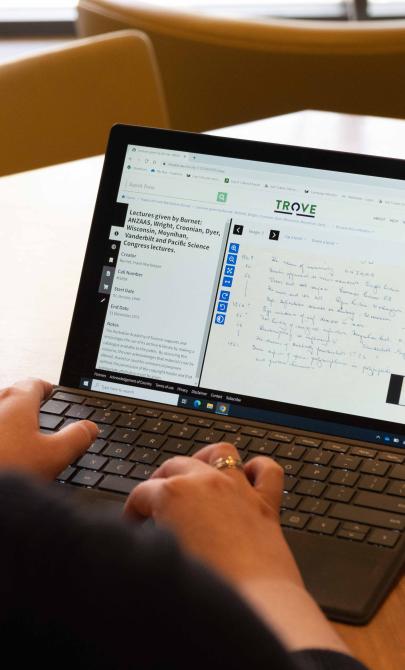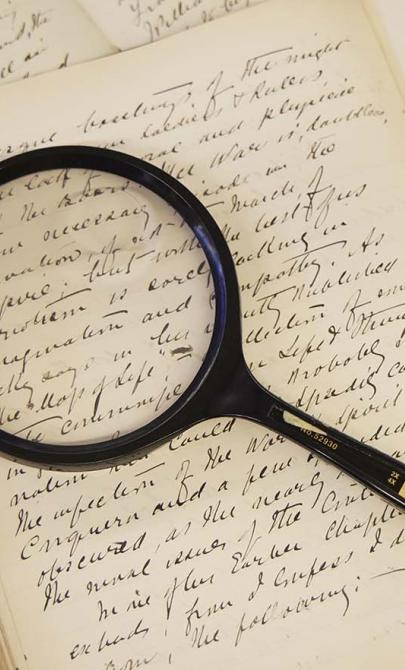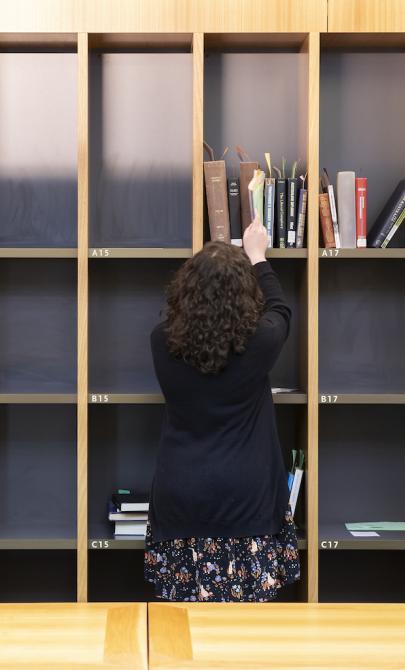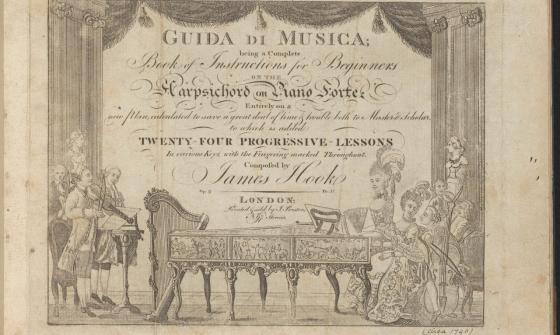Flynn Collection
Key items in the collection
The William Flynn Collection contains about 1750 musical scores and is arranged in the following series:
- Musical arrangements by Flynn
- Radio 3DB orchestral scores and parts, both printed and manuscript
- Musical arrangements by Flynn for Radio 3DB
- Radio 3DB vocal scores
- Miscellaneous material
- Radio 3DB radio shows, scripts and music
There are about 950 music manuscripts comprising arrangements by Flynn for light orchestras and dance bands, mostly dating from 1949-52. They have such titles as:
- Caprice for strings
- Flying down to Rio
- Girl I left behind me
- Greensleeves
- I want to be happy
- I’m in love with Vienna
- Melody for two
- Rosalie
- Someone to watch over me
- Symphony of spring
The composers are not usually identified, but they include:
- Hoagy Carmichael
- Noel Coward
- Mack Gordon
- Victor Herbert
- Jerome Kern
- Cole Porter
- Richard Rodgers
- Vincent Yeomans.
The printed scores and parts are mostly works of overseas composers and include:
- Concerti
- Symphonies
- Orchestral suites
- Overtures
- Operetta
- Waltzes
- Mazurkas
- Ballet music
- Marches
- Opera arias
- Folk songs
- Songs from musical comedies
Composers represented in the collection include:
- Frederic Chopin
- Eric Coates
- Leo Delibes
- Antonin Dvorak
- Oscar Fetras
- Rudolf Friml
- Edvard Grieg
- Victor Herbert
- Victor Jacobi
- Jerome Kern
- Fritz Kreisler
- Franz Lehar
- Franz Liszt
- Ivor Novello
- Jacques Offenbach
- Sigmund Romberg
- Johann Strauss
- Arthur Sullivan
- Peter Tchaikovsky
- Émile Waldteufel
- Haydn Wood
There are also published works by a few Australian composers, such as:
- May Brahe
- Alfred Hill
The manuscript scores include arrangements by colleagues of William Flynn, particularly:
- Rolf Atkinson
- Sam Dunn
- Isador Goodman
- Robert Hughes
- Elford McHonnegger
- Ern Pettifer
- Verdon Williams
There are also a small number of scripts and programs from 3DB radio broadcasts, including series such as:
- Concerts for You
- Twentieth Century Hits in Chorus
About William Flynn
William Flynn (1902-1981) was a Melbourne-born musician, conductor and musical director whose career spanned radio, live performance, military service and recording.
Early life and musical beginnings
Flynn began his musical journey playing the cornet in primary school before studying violin, clarinet and saxophone. In 1928, he formed the Billy O’Flynn Band, which performed across Melbourne and toured Tasmania.
International touring and wartime service
During the 1930s, Flynn toured with various American bands through China, Russia and Japan. He also worked with J.C. Williamson and other theatrical companies, and served as musical director of Legionnaire Records. During World War II, he enlisted in the Australian Army and became its chief musical arranger.
Radio and orchestral work
After the war, Flynn returned to Melbourne and worked with a range of ensembles. He served as musical director for Jack Davey at radio station 3AW, and in 1949 was appointed musical director and joint conductor (with Verdon Williams) of the new 3DB concert orchestra. The orchestra, which performed popular and light classical music, was disbanded in 1952.
Flynn also wrote musical scores for radio serials and arranged a weekly program, The William Flynn Show.
Later career and recordings
In later years, Flynn collaborated with many Melbourne singers and bands, conducted his own orchestras, and made numerous recordings. He also served as musical director for Spotlight Microgroove Records, contributing significantly to the city’s postwar music scene.
Background to the collection
The William Flynn collection of sheet music and musical arrangements was purchased from Flynn in 1977. Further musical arrangements were acquired from his widow, Pat Flynn, in 1984.
The William Flynn Collection is kept together as a formed collection within the Music collection. The scores are catalogued individually and the call numbers have the prefix MUS Flynn N.
A substantial collection of sound recordings, which formed part of the Flynn Collection, are now held in the National Film and Sound Archive in Canberra.







